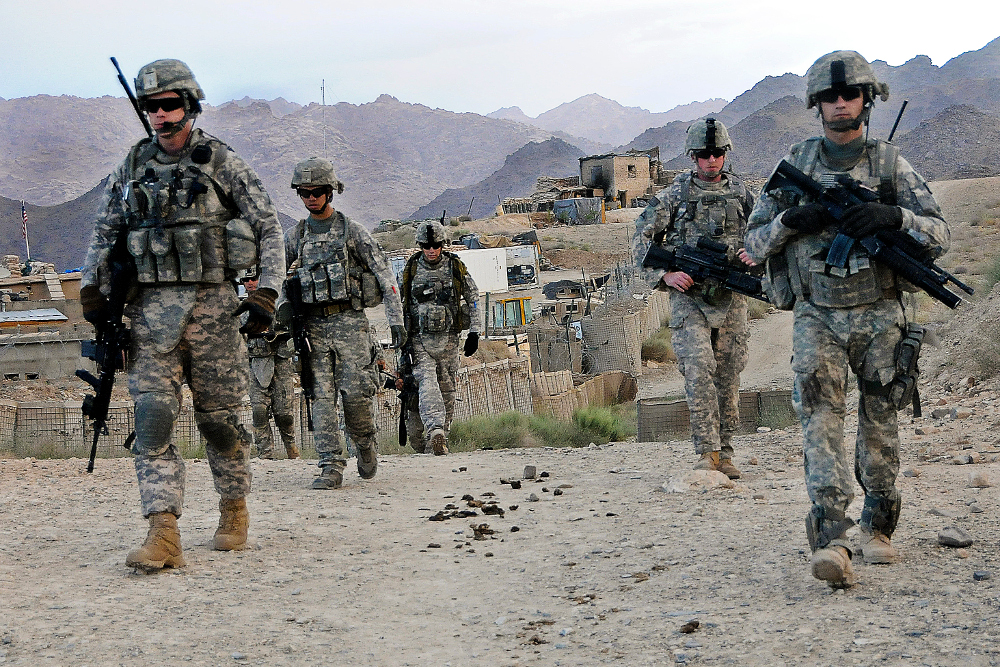by Paul R. Pillar
Fifteen years and counting. America’s longest war keeps getting longer. The very duration of the expedition, with an end no more in sight now than it had been at any of several points one could have chosen over the last several years, ought to indicate the need for a fundamental redirection of policy. And yet there continue to be calls, including from influential members of Congress, to sustain and even enlarge the U.S. military campaign in Afghanistan.
That campaign has now continued under three U.S. presidents, two Afghan presidents, too many U.S. military commanders to count, and a variety of operational strategies associated with the different generals. Different levels of U.S. troops also have been tried, with the peak of just over 100,000 American troops reached in 2011.
Something approaching peace and stability will come to Afghanistan the only way it ever has come to Afghanistan in the past: through deals reached among the different factions, power centers, and ethnic groups within Afghanistan. External military intervention does not negate or obviate that process, and instead becomes the object of Afghan resistance to outside interference. It is not for nothing that the place is called the graveyard of empires.
The shape of any deals reached among Afghan factions matters relatively little to the United States. One need make no apologies for borrowing from old speeches in describing the current conflict in Afghanistan as a quarrel in a faraway country between people of whom we know nothing. Unlike the circumstances in which that phrase was first used, there is no hostile and threatening power poised to exploit passivity on our part.
The U.S.-led intervention in Afghanistan in the fall of 2001 was, at that time, a just response to an attack on the U.S. homeland by a group that was enjoying the hospitality of the Afghan Taliban, which constituted the de facto regime ruling most of Afghanistan. One of the fundamental mistakes in how Americans have viewed Afghanistan ever since—in addition to the mistake of treating as an investment the sunk costs, including 2,400 American dead—is to think that the circumstances of 2001 still prevail. They don’t. The Afghan Taliban never have been interested in international terrorism. Their focus always has been on the social and political structure of Afghanistan. The past alliance with al-Qa’ida was one of convenience, in which the payoff for the Taliban was assistance in prosecuting their civil war against Afghan opponents. There is nothing special about Afghanistan, distinguishing it from many other strife-ridden places such as Yemen or Somalia, that connects it today with a terrorist threat against U.S. interests. 9/11 itself was the work of Arabs, not Afghans. And with the gloves having been taken off after 9/11, the Taliban know, as everyone else does, that if anything at all like the 2001 al-Qa’ida presence were to begin being re-established in Afghanistan, the United States would promptly bomb the heck out of it.
The United States had an earlier experience injecting armed force into Afghanistan, with its provision of lethal aid—most notably Stinger anti-aircraft missiles—to mujahedin fighting against the Soviets in the 1980s. During that effort, U.S. policymakers showed little or no concern with the political nature and direction of the forces they were aiding, which included what we would today quickly label as violent Islamists. Those forces were used as a tool to bleed the Soviets, who got themselves stuck in a military expedition that reached a strength just slightly bigger (about 115,000 troops) than the later U.S. expedition.
Russians noticed what the United States was doing, and they remember it today. And maybe roles are reversing and the bleeding is coming full circle. U.S. General Curtis Scaparrotti, who is the top NATO commander in Europe, told a Congressional committee this week that Russia appears to be increasing its role in Afghanistan and may be providing material support to the Taliban. The situation is unclear; a spokesman for the Russian foreign ministry strongly denied the accusation, and a careful tally of other relevant Russian interests would not argue in favor of aiding the Taliban. Nonetheless, it would not be surprising if Moscow—with irony and with what many Russians probably would consider just deserts—took a page from the U.S. playbook of the 1980s. The underlying idea would be that Afghanistan has become for America today what it was for the USSR back then.
The Soviets did get out of the graveyard of empires, even with no more claim to victory than the United States would have today. The last Soviet soldier to leave Afghanistan was the commander, Lieutenant General Boris Gromov, who walked across a bridge spanning the Amu Darya River into Soviet Uzbekistan on February 16, 1989. His departure marked nine years and 50 days since the initial Soviet intervention. The United States exceeded that mark years ago.
This article was first published by the National Interest and was reprinted here with permission. Copyright The National Interest.





